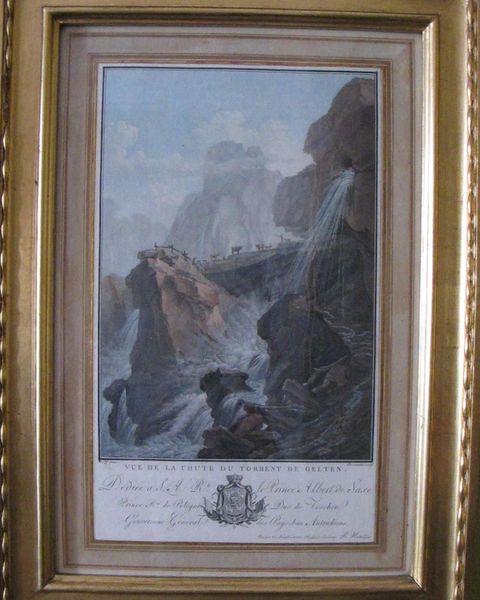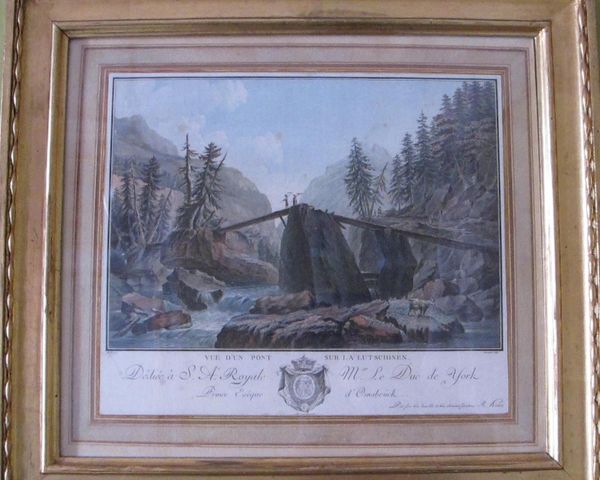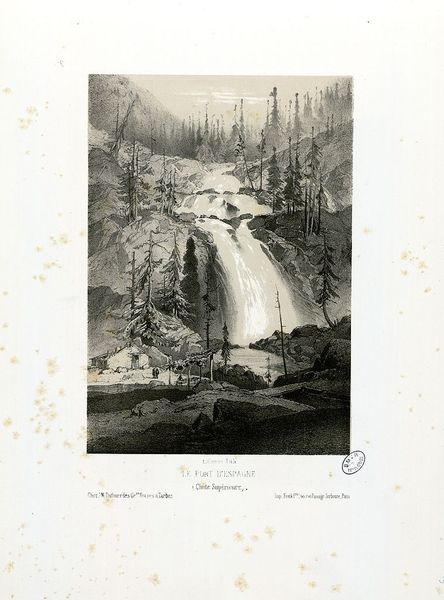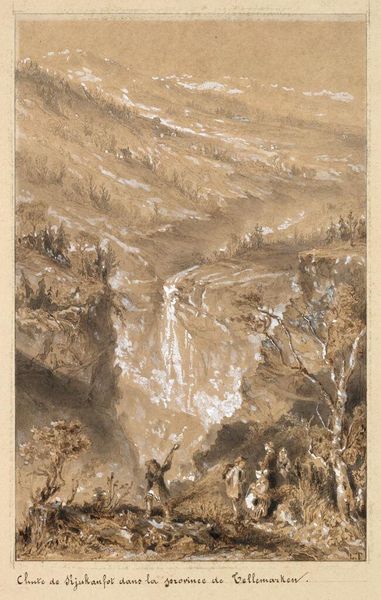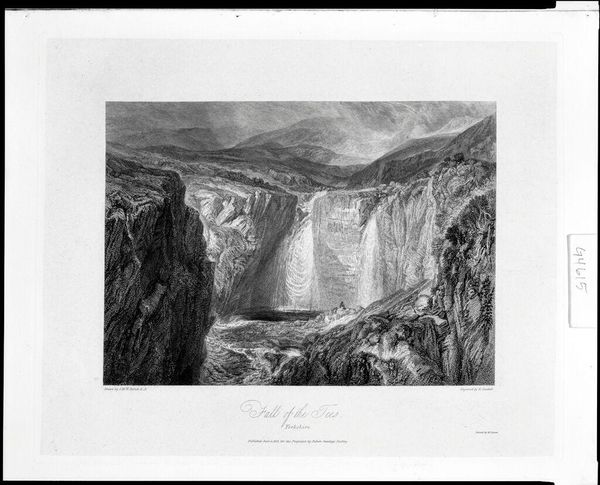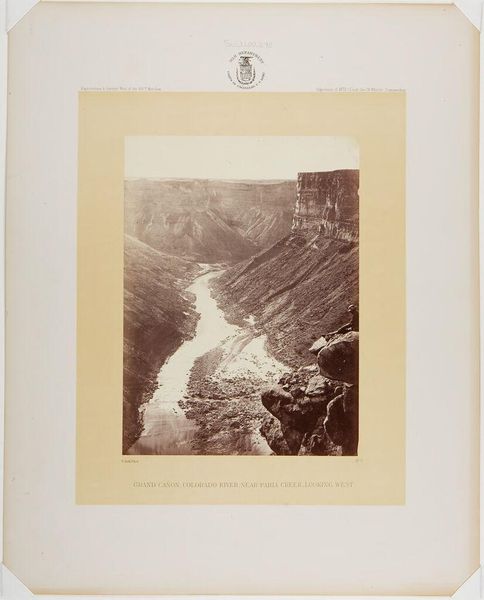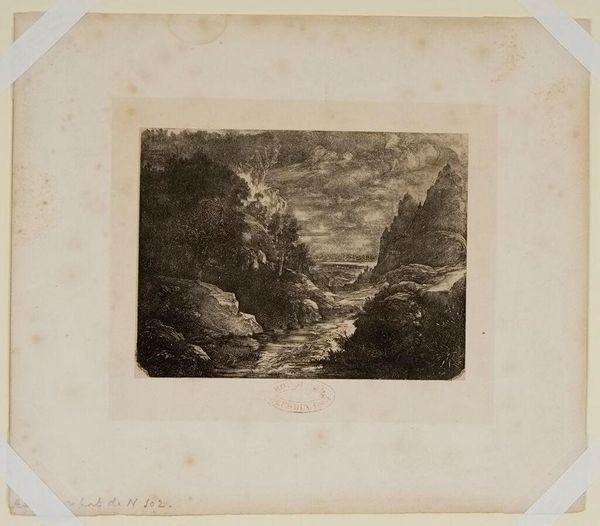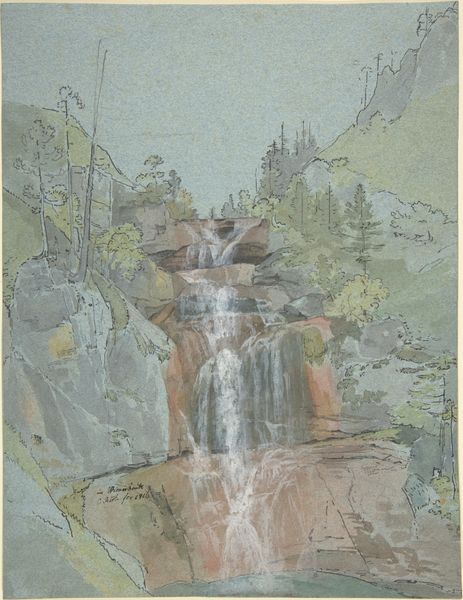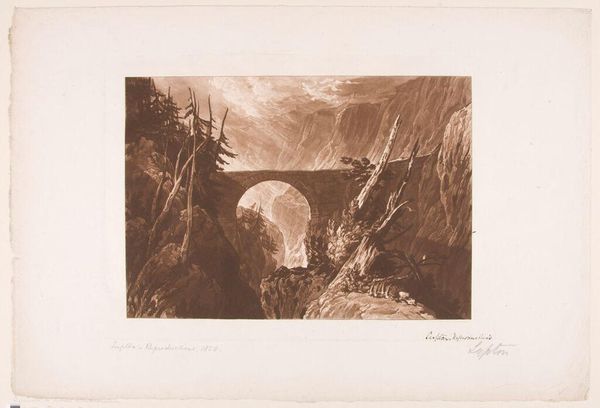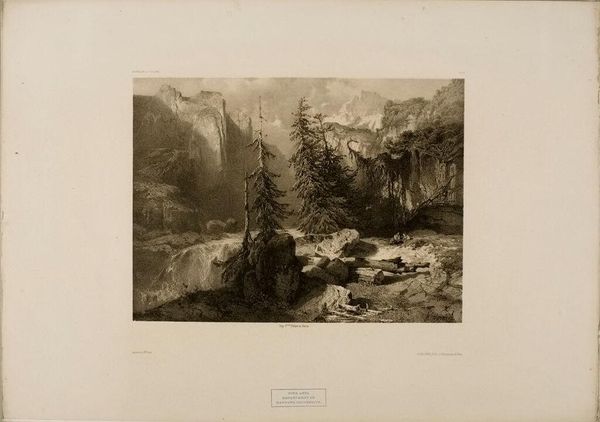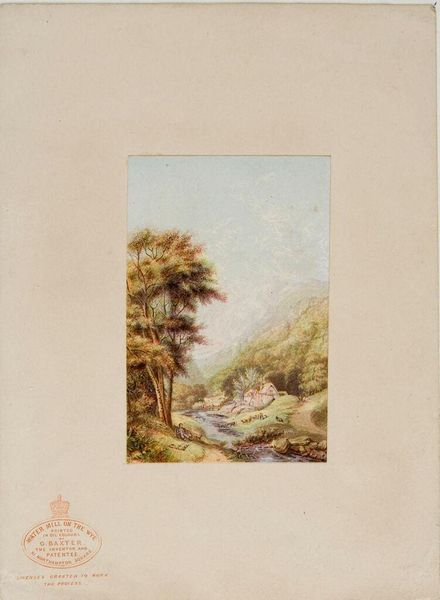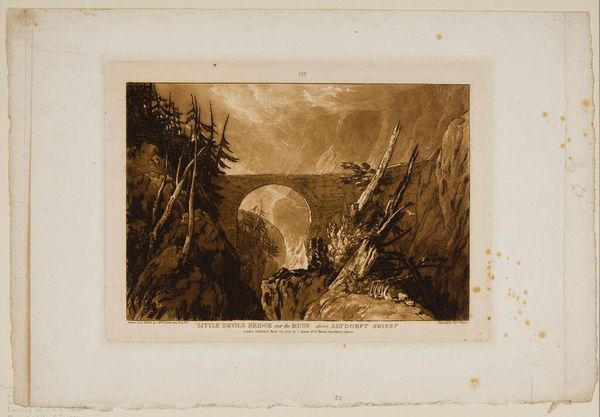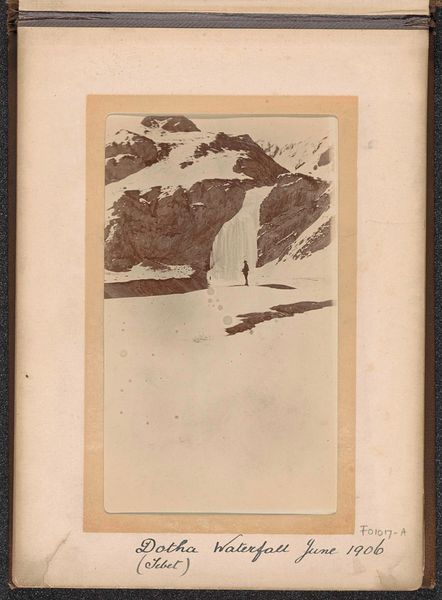
aquatint, print, watercolor
#
aquatint
# print
#
landscape
#
watercolor
#
romanticism
#
watercolor
Dimensions: 350 mm (height) x 398 mm (width) (netto)
Curator: What a striking piece! Charles Melchior Descourtis created this watercolor and aquatint print, titled "Premiere chute du staubach," sometime in the 18th century. It resides here at the SMK, Statens Museum for Kunst. Editor: My first impression is a sense of sublime power, but also vulnerability. That lone figure dwarfed by the waterfall evokes our fragile place within nature's grandeur. It speaks to something about class as well as isolation. Curator: Absolutely. I see Romanticism's influence here, that fascination with untamed nature and individual experience. The prints likely became very popular through the developing tourist economy of the time, but Descourtis chose Staubbach. Editor: Yes, situating this artwork within its moment is key. We can read it as a reaction to the Enlightenment, a yearning for something beyond rational order. Landscape becomes a stage for exploring psychological and emotional states. The question is, whose stage is it, and for whom is it performing? I think this has political significance. Curator: That's insightful. Consider the institutional context. Prints like this circulated widely, democratizing access to images of nature but also shaping perceptions. What role did they play in solidifying certain aesthetic tastes, perhaps connected to class identity, or even justifying colonial attitudes by romanticizing 'untamed' landscapes? Editor: Precisely! Who gets to define the sublime? Is it inherently gendered, racialized, or linked to colonial power structures? The lone figure, rendered insignificant, is also implicitly gendered by his class. We must acknowledge that artistic movements like Romanticism, though seemingly universal, were deeply embedded in power dynamics. Curator: Thinking of contemporary theory helps to interrogate the artwork's relationship to our present understanding and I think you bring up salient points here. Thank you! Editor: Likewise, you've offered some keen insight as well.
Comments
No comments
Be the first to comment and join the conversation on the ultimate creative platform.
